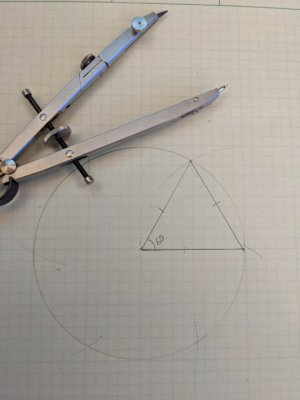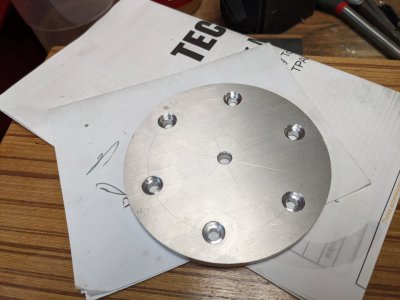- Joined
- Dec 30, 2021
- Messages
- 60
My part is a 4" aluminum disc. I'm doing a six hole circle .500 in from the edge.
I don't have the rotary table just yet and the travel of the y axis keeps me from just using trigonometry.
For this part, I can probably get away with Dykem and a protractor, but I'd appreciate any tips for skinning this particular cat. FWIW, there's a center hole as well, so I can set this thing up to spin about its center.
I don't have the rotary table just yet and the travel of the y axis keeps me from just using trigonometry.
For this part, I can probably get away with Dykem and a protractor, but I'd appreciate any tips for skinning this particular cat. FWIW, there's a center hole as well, so I can set this thing up to spin about its center.



 . Or so I have found!
. Or so I have found!